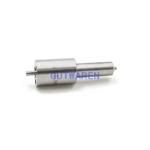Information injection-pump assembly
BOSCH
9 400 616 600
9400616600
ZEXEL
106661-2200
1066612200
MITSUBISHI
ME157824
me157824
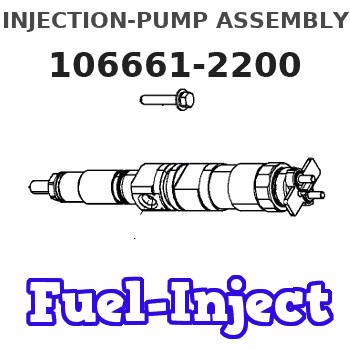
Rating:
Service parts 106661-2200 INJECTION-PUMP ASSEMBLY:
1.
_
7.
COUPLING PLATE
8.
_
9.
_
11.
Nozzle and Holder
12.
Open Pre:MPa(Kqf/cm2)
17.7(180)/24.5(250)
15.
NOZZLE SET
Include in #1:
106661-2200
as INJECTION-PUMP ASSEMBLY
Cross reference number
BOSCH
9 400 616 600
9400616600
ZEXEL
106661-2200
1066612200
MITSUBISHI
ME157824
me157824
Zexel num
Bosch num
Firm num
Name
106661-2200
9 400 616 600
ME157824 MITSUBISHI
INJECTION-PUMP ASSEMBLY
6D22-TL K
6D22-TL K
Calibration Data:
Adjustment conditions
Test oil
1404 Test oil ISO4113 or {SAEJ967d}
1404 Test oil ISO4113 or {SAEJ967d}
Test oil temperature
degC
40
40
45
Nozzle and nozzle holder
105780-8140
Bosch type code
EF8511/9A
Nozzle
105780-0000
Bosch type code
DN12SD12T
Nozzle holder
105780-2080
Bosch type code
EF8511/9
Opening pressure
MPa
17.2
Opening pressure
kgf/cm2
175
Injection pipe
Outer diameter - inner diameter - length (mm) mm 8-3-600
Outer diameter - inner diameter - length (mm) mm 8-3-600
Overflow valve
131424-6920
Overflow valve opening pressure
kPa
191
157
225
Overflow valve opening pressure
kgf/cm2
1.95
1.6
2.3
Tester oil delivery pressure
kPa
157
157
157
Tester oil delivery pressure
kgf/cm2
1.6
1.6
1.6
Direction of rotation (viewed from drive side)
Right R
Right R
Injection timing adjustment
Direction of rotation (viewed from drive side)
Right R
Right R
Injection order
1-5-3-6-
2-4
Pre-stroke
mm
4.8
4.75
4.85
Beginning of injection position
Governor side NO.1
Governor side NO.1
Difference between angles 1
Cal 1-5 deg. 60 59.5 60.5
Cal 1-5 deg. 60 59.5 60.5
Difference between angles 2
Cal 1-3 deg. 120 119.5 120.5
Cal 1-3 deg. 120 119.5 120.5
Difference between angles 3
Cal 1-6 deg. 180 179.5 180.5
Cal 1-6 deg. 180 179.5 180.5
Difference between angles 4
Cyl.1-2 deg. 240 239.5 240.5
Cyl.1-2 deg. 240 239.5 240.5
Difference between angles 5
Cal 1-4 deg. 300 299.5 300.5
Cal 1-4 deg. 300 299.5 300.5
Injection quantity adjustment
Adjusting point
A
Rack position
10.2
Pump speed
r/min
650
650
650
Average injection quantity
mm3/st.
138.5
136.5
140.5
Max. variation between cylinders
%
0
-2.5
2.5
Basic
*
Fixing the lever
*
Boost pressure
kPa
27.3
27.3
Boost pressure
mmHg
205
205
Injection quantity adjustment_02
Adjusting point
C
Rack position
6.5+-0.5
Pump speed
r/min
225
225
225
Average injection quantity
mm3/st.
17.5
14.9
20.1
Max. variation between cylinders
%
0
-15
15
Fixing the rack
*
Boost pressure
kPa
0
0
0
Boost pressure
mmHg
0
0
0
Injection quantity adjustment_03
Adjusting point
D
Rack position
8.6
Pump speed
r/min
700
700
700
Average injection quantity
mm3/st.
101.5
98.5
104.5
Fixing the lever
*
Boost pressure
kPa
0
0
0
Boost pressure
mmHg
0
0
0
Injection quantity adjustment_04
Adjusting point
E
Rack position
-
Pump speed
r/min
100
100
100
Average injection quantity
mm3/st.
135
115
155
Fixing the lever
*
Boost pressure
kPa
0
0
0
Boost pressure
mmHg
0
0
0
Boost compensator adjustment
Pump speed
r/min
700
700
700
Rack position
8.6
Boost pressure
kPa
5.3
5.3
5.3
Boost pressure
mmHg
40
40
40
Boost compensator adjustment_02
Pump speed
r/min
700
700
700
Rack position
10.2
Boost pressure
kPa
14
14
14
Boost pressure
mmHg
105
105
105
Timer adjustment
Pump speed
r/min
950--
Advance angle
deg.
0
0
0
Remarks
Start
Start
Timer adjustment_02
Pump speed
r/min
1100
Advance angle
deg.
4
3.5
4.5
Remarks
Finish
Finish
Test data Ex:
Governor adjustment
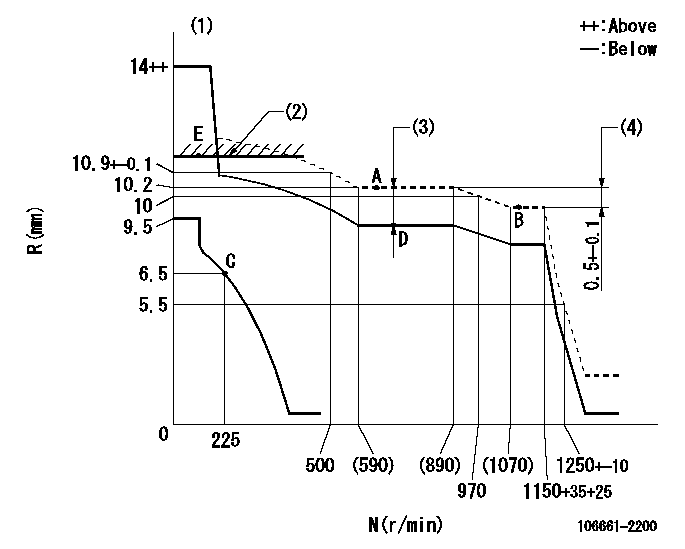
N:Pump speed
R:Rack position (mm)
(1)Target notch: K
(2)RACK LIMIT
(3)Boost compensator stroke: BCL
(4)Rack difference between N = N1 and N = N2
----------
K=14 BCL=1.6+-0.1mm N1=1100r/min N2=650r/min
----------
----------
K=14 BCL=1.6+-0.1mm N1=1100r/min N2=650r/min
----------
Speed control lever angle
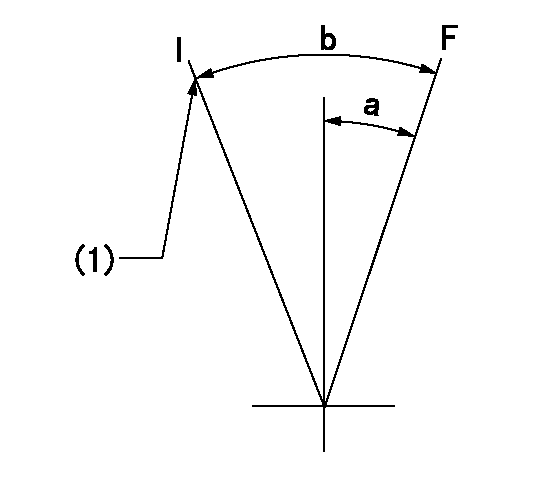
F:Full speed
I:Idle
(1)Stopper bolt setting
----------
----------
a=(12deg)+-5deg b=(28deg)+-5deg
----------
----------
a=(12deg)+-5deg b=(28deg)+-5deg
Stop lever angle
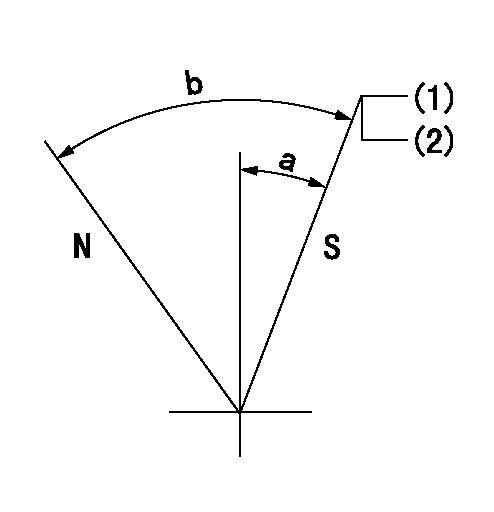
N:Pump normal
S:Stop the pump.
(1)Pump speed aa and rack position bb (to be sealed at delivery)
(2)Stopper bolt setting
----------
aa=0r/min bb=1-0.2mm
----------
a=35deg+-5deg b=70deg+-5deg
----------
aa=0r/min bb=1-0.2mm
----------
a=35deg+-5deg b=70deg+-5deg
Timing setting

(1)Pump vertical direction
(2)Coupling's key groove position at No 1 cylinder's beginning of injection
(3)B.T.D.C.: aa
(4)-
----------
aa=13deg
----------
a=(7deg)
----------
aa=13deg
----------
a=(7deg)
Information:
Crankshaft Turns Free Exhaust Smoke Can Be Seen While Starting
Cold Outside Temperatures ... It may be necessary to use starting aids, or warm engine oil or coolant, at temperatures below 10°F (-12°C).Air in Fuel System ... See PRIMING THE FUEL SYSTEM.Low Quality Fuel ... Drain a small amount of fuel from the tank and check for water in the fuel. If there is water in the fuel, drain the tank and fill with a good quality fuel. Change the fuel filter and "prime". If there is no water in the fuel, using an outside supply of fuel, prime and start the engine. If engine starts correctly using different fuel, remove all fuel from the tank and fill with good quality fuel and prime the fuel system.Fuel Injection Timing Not Correct. *Valve Adjustment Not Correct ... Check and make necessary adjustment. See VALVE LASH ADJUSTMENT.Defective Fuel Nozzle(s) ... Replace the fuel nozzles.Low Compression ... See the topic MISFIRING AND RUNNING ROUGH.Exhaust Smoke Cannot Be Seen While Starting
No Fuel in Tank ... Check fuel level visually (do not use the fuel gauge only). Be sure tank selection valve is open to the tank with fuel in it. Be sure valve in fuel line between the tanks is open.No Fuel From Fuel Injection Pump ... Loosen one or more of the fuel injection line nuts at the cylinder heads. With ignition switch on and accelerator in the fuel on position, turn the engine with the starter to be sure there is no fuel from the fuel injection pump. To find the cause for no fuel, see the following information.Prime fuel system.Check solenoid by turning on ignition switch. You must hear a sound when the plunger opens. If no sound is heard, make sure there is battery voltage at the solenoid and that the voltage is no less than 8 volts (terminal voltage while cranking). If voltage is less than 8 volts, the problem is low charge in battery or defective wiring. If voltage is 8 or more volts, loosen the cap on the tee at the fuel filter and release the fuel pressure at the solenoid. If the solenoid now works, the fuel transfer pump is holding fuel pressure at the solenoid. Clean or install a new fuel transfer pump. If solenoid does not work when pressure is released, install a new solenoid.Check for a dirty fuel filter by checking fuel pressure at the fuel filter outlet while turning the engine with the starter. If fuel pressure is less than 13 psi (0,9 kg/cm2) check fuel pressure at the outlet of the fuel transfer pump. If fuel pressure at the outlet of the transfer pump is more than the fuel pressure at the fuel filter outlet, install a new fuel filter.Check for a defective fuel transfer pump by checking fuel pressure at the outlet of the fuel transfer pump while turning the engine with the starter. If fuel pressure is less than 13 psi (0,9 kg/cm2), clean the primary fuel filter
Cold Outside Temperatures ... It may be necessary to use starting aids, or warm engine oil or coolant, at temperatures below 10°F (-12°C).Air in Fuel System ... See PRIMING THE FUEL SYSTEM.Low Quality Fuel ... Drain a small amount of fuel from the tank and check for water in the fuel. If there is water in the fuel, drain the tank and fill with a good quality fuel. Change the fuel filter and "prime". If there is no water in the fuel, using an outside supply of fuel, prime and start the engine. If engine starts correctly using different fuel, remove all fuel from the tank and fill with good quality fuel and prime the fuel system.Fuel Injection Timing Not Correct. *Valve Adjustment Not Correct ... Check and make necessary adjustment. See VALVE LASH ADJUSTMENT.Defective Fuel Nozzle(s) ... Replace the fuel nozzles.Low Compression ... See the topic MISFIRING AND RUNNING ROUGH.Exhaust Smoke Cannot Be Seen While Starting
No Fuel in Tank ... Check fuel level visually (do not use the fuel gauge only). Be sure tank selection valve is open to the tank with fuel in it. Be sure valve in fuel line between the tanks is open.No Fuel From Fuel Injection Pump ... Loosen one or more of the fuel injection line nuts at the cylinder heads. With ignition switch on and accelerator in the fuel on position, turn the engine with the starter to be sure there is no fuel from the fuel injection pump. To find the cause for no fuel, see the following information.Prime fuel system.Check solenoid by turning on ignition switch. You must hear a sound when the plunger opens. If no sound is heard, make sure there is battery voltage at the solenoid and that the voltage is no less than 8 volts (terminal voltage while cranking). If voltage is less than 8 volts, the problem is low charge in battery or defective wiring. If voltage is 8 or more volts, loosen the cap on the tee at the fuel filter and release the fuel pressure at the solenoid. If the solenoid now works, the fuel transfer pump is holding fuel pressure at the solenoid. Clean or install a new fuel transfer pump. If solenoid does not work when pressure is released, install a new solenoid.Check for a dirty fuel filter by checking fuel pressure at the fuel filter outlet while turning the engine with the starter. If fuel pressure is less than 13 psi (0,9 kg/cm2) check fuel pressure at the outlet of the fuel transfer pump. If fuel pressure at the outlet of the transfer pump is more than the fuel pressure at the fuel filter outlet, install a new fuel filter.Check for a defective fuel transfer pump by checking fuel pressure at the outlet of the fuel transfer pump while turning the engine with the starter. If fuel pressure is less than 13 psi (0,9 kg/cm2), clean the primary fuel filter
Have questions with 106661-2200?
Group cross 106661-2200 ZEXEL
Mitsubishi
106661-2200
9 400 616 600
ME157824
INJECTION-PUMP ASSEMBLY
6D22-TL
6D22-TL
